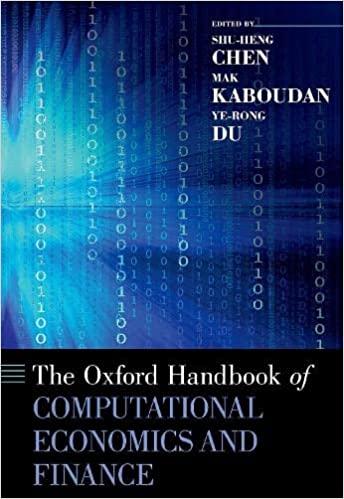Question
1)You have $35,259.87 in a brokerage account, and you plan to deposit an additional $2,500 at the end of every future year until your account
1)You have $35,259.87 in a brokerage account, and you plan to deposit an additional $2,500 at the end of every future year until your account totals $350,000. You expect to earn 11.7% annually on the account. How many years will it take to reach your goal? Round your answer to the nearest whole number.
2)What is the future value of a 10%, 5-year ordinary annuity that pays $550 each year? Round your answer to the nearest cent.
If this were an annuity due, what would its future value be? Round your answer to the nearest cent.
3)An investment will pay $100 at the end of each of the next 3 years, $300 at the end of Year 4, $500 at the end of Year 5, and $700 at the end of Year 6. If other investments of equal risk earn 9% annually, what is its present value? Round your answer to the nearest cent.
What is its future value? Round your answer to the nearest cent.
4)You want to buy a car, and a local bank will lend you $10,000. The loan would be fully amortized over 6 years (72 months), and the nominal interest rate would be 10%, with interest paid monthly. What is the monthly loan payment? Round your answer to the nearest cent.
What is the loan's EFF%? Round your answer to two decimal places.
5)
Present and Future Values of Single Cash Flows for Different Periods
Find the following values, using the equations, and then work the problems using a financial calculator to check your answers. Disregard rounding differences. (Hint: If you are using a financial calculator, you can enter the known values and then press the appropriate key to find the unknown variable. Then, without clearing the TVM register, you can "override" the variable that changes by simply entering a new value for it and then pressing the key for the unknown variable to obtain the second answer. This procedure can be used in parts b and d, and in many other situations, to see how changes in input variables affect the output variable.)
An initial $800 compounded for 1 year at 5.6%. Round your answers to the nearest cent.
$ An initial $800 compounded for 2 years at 5.6%. Round your answers to the nearest cent.
$ The present value of $800 due in 1 year at a discount rate of 5.6%. Round your answers to the nearest cent.
$ The present value of $800 due in 2 years at a discount rate of 5.6%. Round your answers to the nearest cent.
$
Step by Step Solution
There are 3 Steps involved in it
Step: 1

Get Instant Access to Expert-Tailored Solutions
See step-by-step solutions with expert insights and AI powered tools for academic success
Step: 2

Step: 3

Ace Your Homework with AI
Get the answers you need in no time with our AI-driven, step-by-step assistance
Get Started


